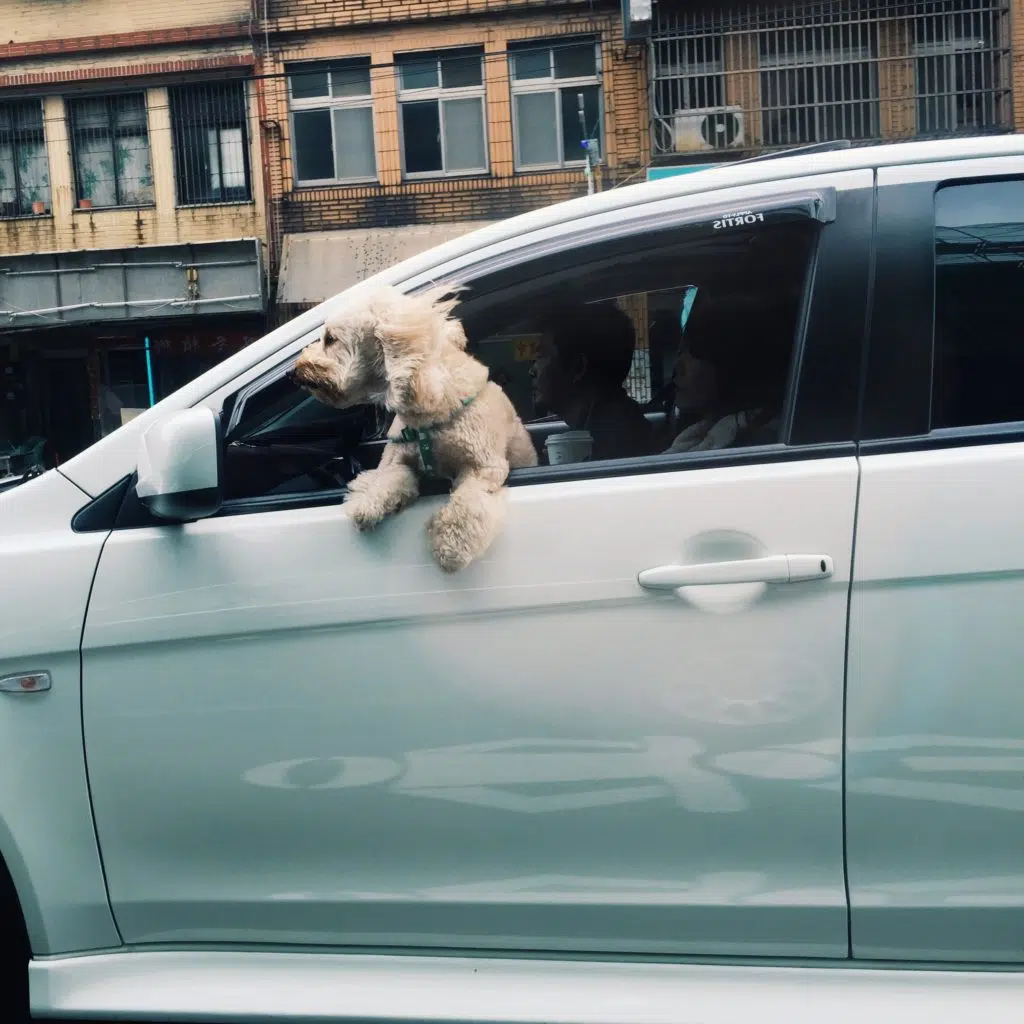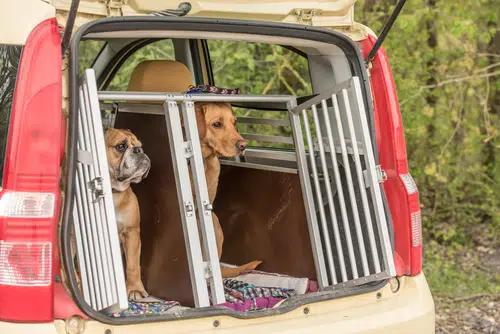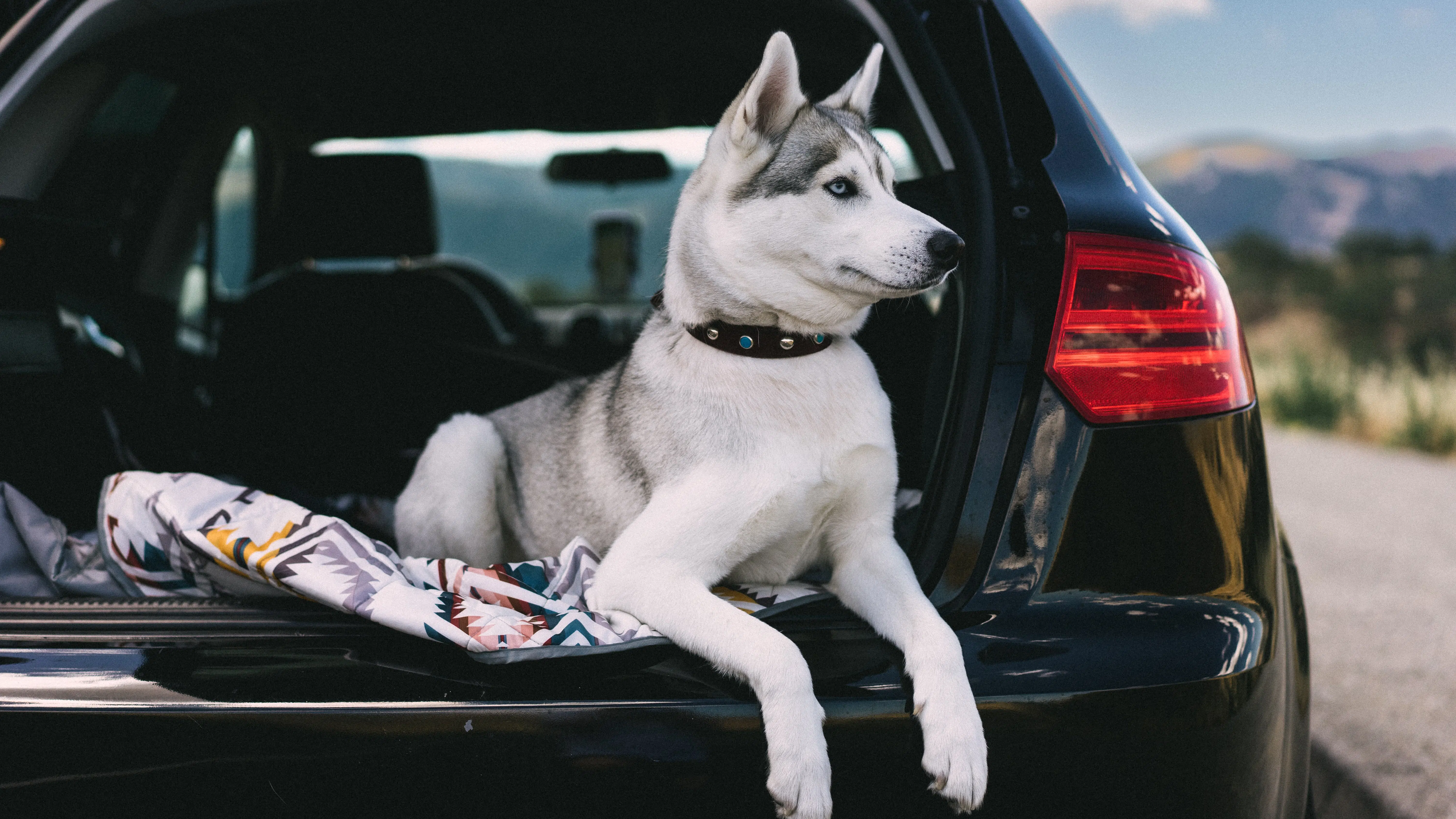Home » Blog » Car » Car Health & Safety » A Guide to Pet Safety in Cars
Categories
Tags
animal welfare
breed profile
buying a car
buying a pet
Car
car accessories
car care
car features
car insurance
Car safety
car sales
car service
cat
cat behaviour
cat body language
Cat Breeds
cat food
cat insurance
comprehensive car insurance
Dog
Dog Behaviour
dog body language
Dog Breeds
dog food
Dog Insurance
dog training
eco friendly cars
Kitten
New Car
pet accessories
pet activities
Pet Adoption
pet breeders
pet days of the year
pet fun stuff
Pet Health
pet insurance
pet parenting
Pet Safety
pet services
Puppy
rescue pets
road safety
road trip
safe driving
Recent Blog:
Facebook Posts
1 day ago
Growing old sometimes means we can’t take care of pets anymore. Find out some advice on what to do when this happens:![]()
![]() Senior Pet Parents – Contingency Plans for Your Pet – bit.ly/44bzwkS
... See MoreSee Less
Senior Pet Parents – Contingency Plans for Your Pet – bit.ly/44bzwkS
... See MoreSee Less
Senior Pet Parents' Contingency Plans for Pets
www.pd.com.au
Sometimes senior pet parents need more downtime. For older pet owners, this can be tricky to navigate if their dog or cat is full of beans and wants to3 days ago
Before you rev up the engine, let’s run through a checklist of things to do before starting your car. Not only do these steps ensure your safety (and that of others around you), but they also help in maintaining your vehicle's longevity.![]()
![]() Driving Tips: Your Checklist Before Starting Your Car -
... See MoreSee Less
Driving Tips: Your Checklist Before Starting Your Car -
... See MoreSee Less
Driving Tips: Your Checklist Before Starting Your Car
www.pd.com.au
Heading out for a drive? Hold up a second! Whether you're dashing off to work, running errands, or embarking on a road trip adventure, there are a few1 week ago
Are intestinal worms setting up camp in your dog’s gut without paying rent? Here’s how to spot the main culprits and get rid of them too:![]()
![]() Preventing, Identifying and Treating Intestinal Worms in Dogs - bit.ly/43YjCKu
... See MoreSee Less
Preventing, Identifying and Treating Intestinal Worms in Dogs - bit.ly/43YjCKu
... See MoreSee Less
Preventing, Identifying and Treating Intestinal Worms in Dogs
www.pd.com.au
Intestinal worms, such as roundworms in dogs are one of the least glamorous topics on the planet. These intestinal parasites that basically use our dogsWhen it comes to road safety buckling up, staying alert, and sticking to speed limits is second nature. Where most of us fall short is enforcing pet safety in cars. Letting the furkids break the rules in the car can lead to unsafe situations for the whole family. At some point most of us have been guilty of driving with a pup or cat on our laps or leaving them free to run around the back seat. This is not best practice for road safety and pets.
As a pet parent, the best way to tackle pet safety in cars is to give them the same car safety rules as human babies. Here’s some good reasons why.
Why is pet safety in cars so important?
Although Max is usually a chilled pooch, even he is unpredictable in a highly stimulative, dynamic environment.
Though normally a well-behaved boy who sits obediently with his hair flying in the wind, his behaviour quickly changes with excitement or fear. As for cats, they’re also known to go from relaxed to claws out within a split second.
This is all it takes for you to be distracted from the road.
Unrestrained pets can cause distractions
Distractions on the road contribute significantly to the number of road crashes, according to the Australian Automobile Association (AAA). Research shows that distraction contributes to about 16% of serious casualty road crashes on Australian roads. This suggests that distracted driving is as dangerous as drink driving.
Distraction is known to increase reaction time such as braking. It can also prevent a driver from maintaining their speed or staying in a lane. This can have a negative impact, to say the least.
Pets are known to jump, claw and climb on the dash or crawl under the pedals within an instant. This is why ensuring pet safety in cars needs to be a priority with every trip you and your fur kid make. Accidents do happen and you’re putting not just your life at risk but the lives of your passengers and other motorists.

Road safety and pets: All passengers inside at all times
Even though sticking his head out the window to feel the breeze is Max’s favourite thing in the world – it’s a major safety red flag. Your pooch can be hit by random road debris thrown up by the tyres or by passing branches. Hard braking can also lead to injury or an accident.
How to lower the risk of injury or death
It’s vital to invest in a pet crate or carrier for the car. Ensure this is large enough for your pet to stand and turn around in. Most importantly, it needs to be secured using a strap or a seat belt. The key to pet safety in cars is the right secure seating purchase and using it properly. At all times. This is what helps save lives.
Do plenty of research online as to the best equipment for you and your pet, and speak to your local pet supplies store professional. Plus, read our article on how to choose the best pet carrier.
Always keep your pet secure and stop regularly to give them some time on the lead outside the car. A bit of food, a chance for the toilet… it will help keep them calm when they’re in the car. Which means fewer distractions for you.
Regular breaks also help you – re-setting your mind and body to encourage staying focused while on the road.
For further help in keeping your car and pet in tip top shape during a road trip, check our pet proofing your car article for a handy list of pet care items to pack. You might also want to look into these pet friendly destinations.
How pet safety in cars can save human lives
Although thinking about being in a collision isn’t pleasant, it’s something we must do to prepare adequately for road safety and pets.
Wearing seat belts can help save you and your passengers’ lives in the event of a crash. During a collision the sudden change in inertia means your body wants to keep moving even though the car has suddenly stopped.

What about how road safety measures can save pets’ lives?
Pet bodies react in the same way as humans. An unrestrained pet is likely to suffer serious injury in a collision. A pet launched by the impact can also cause severe injury to you or others in the car. US research found an unrestrained 5kg pet exerts 135kg of pressure in a crash at 50km/h.
About 5,000 dogs are injured or killed in Australia every year due to falling from a moving vehicle. Another scary thought is your pet being trapped between you and the steering wheel. There’s a huge risk of your pet being crushed and other complications caused by a detonating airbag.
It might be called ‘the dog box’ but placing the carrier in the backseat or boot of your vehicle is often best for Max and for you. When it comes to road safety and pets, implementing a couple of simple measures to address road safety and pets is a significant help if things go wrong.
Finally, if the worst should happen and you get into a fender bender, it’s handy to have a first aid kit and pet insurance. Both will help tend to your pet’s medical needs and provide protection from financial risks involved in unexpected vet bills. Your road travelling rover will thank you for it!
Share On:




